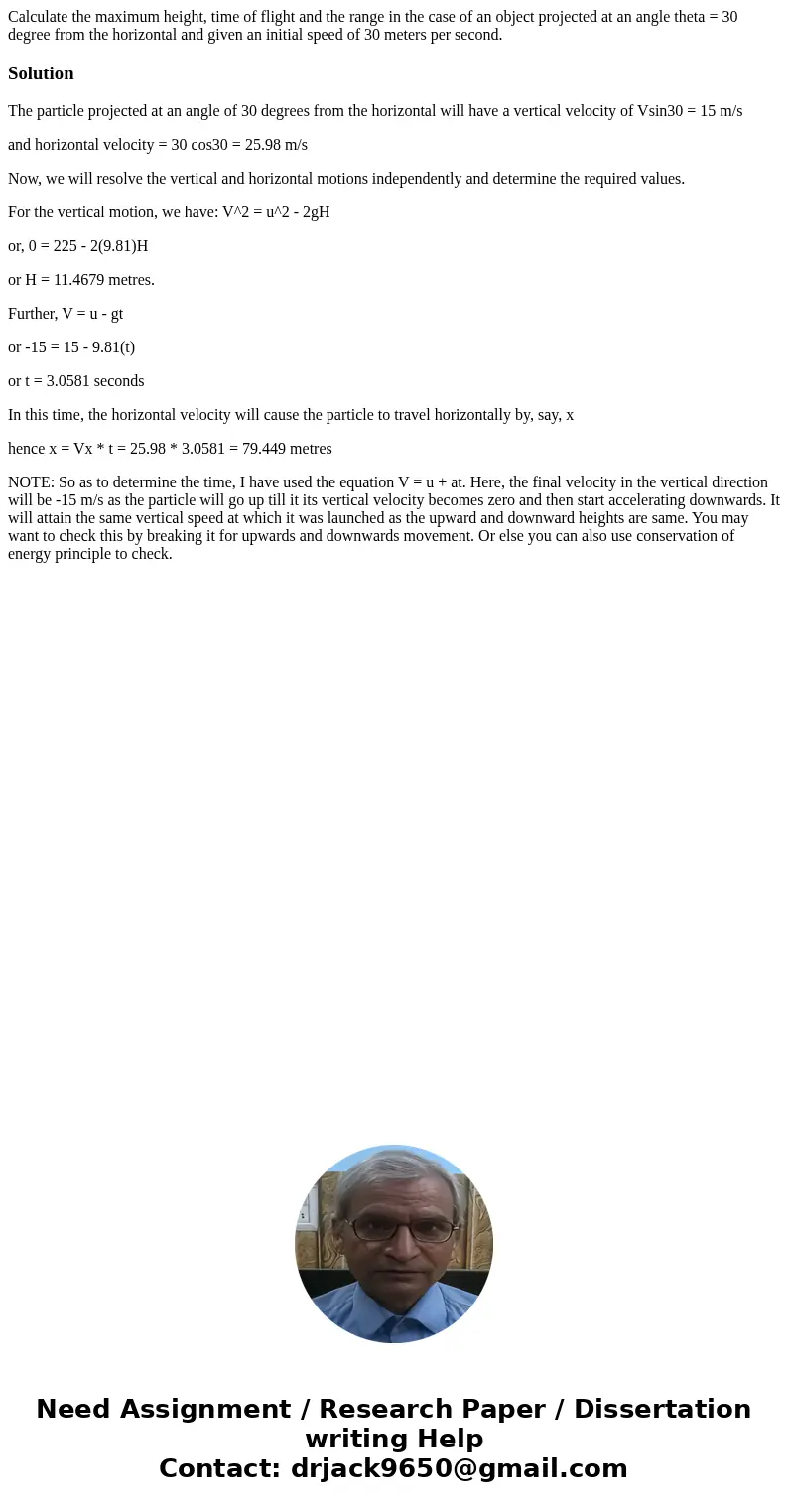Calculate the maximum height time of flight and the range in
Solution
The particle projected at an angle of 30 degrees from the horizontal will have a vertical velocity of Vsin30 = 15 m/s
and horizontal velocity = 30 cos30 = 25.98 m/s
Now, we will resolve the vertical and horizontal motions independently and determine the required values.
For the vertical motion, we have: V^2 = u^2 - 2gH
or, 0 = 225 - 2(9.81)H
or H = 11.4679 metres.
Further, V = u - gt
or -15 = 15 - 9.81(t)
or t = 3.0581 seconds
In this time, the horizontal velocity will cause the particle to travel horizontally by, say, x
hence x = Vx * t = 25.98 * 3.0581 = 79.449 metres
NOTE: So as to determine the time, I have used the equation V = u + at. Here, the final velocity in the vertical direction will be -15 m/s as the particle will go up till it its vertical velocity becomes zero and then start accelerating downwards. It will attain the same vertical speed at which it was launched as the upward and downward heights are same. You may want to check this by breaking it for upwards and downwards movement. Or else you can also use conservation of energy principle to check.

 Homework Sourse
Homework Sourse